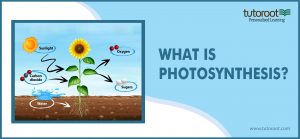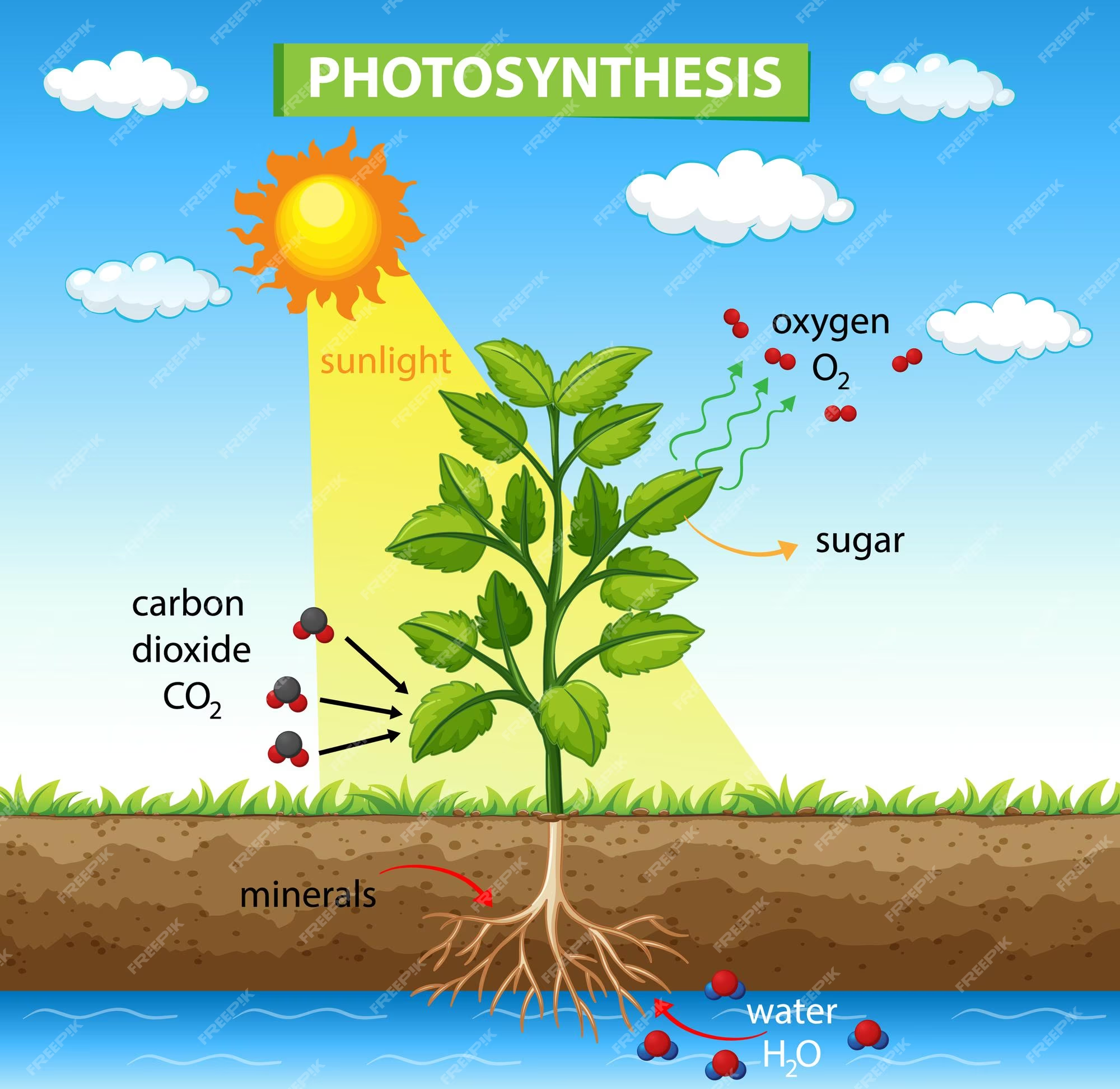What is Photosynthesis? Definition, Diagram, Process

Photosynthesis is the most important procedure in all plants and trees, as it helps them create energy, which in turn assists them in performing various cellular activities. These activities play a major role in the growth and evolution of plants and trees. Here in this section, we will provide a comprehensive description of the process of photosynthesis and its importance and various aspects. Also, the article covers photosynthesis diagrams with explanations.
What is Photosynthesis?
As a student, we all must have been extensively exposed to the term, photosynthesis. With an interesting dimension of energy generation, the process of photosynthesis always remained an important topic of study.
Photosynthesis is defined as the process of conversion of light energy to chemical energy, which in turn is used in performing various cellular activities. This process is commonly observed in phototrophs, and all the chemical energy formed by the process is stored in the form of sugars.
Moreover, the Photosynthesis process is made possible because of special pigments such as chlorophyll a, chlorophyll b, xanthophyll, and carotene. Besides, the photosynthesis process occurs in the Chloroplast of cells, and it involves the absorption of carbon dioxide and water, and converting them to glucose, and oxygen in the presence of sunlight.
Some of the Characteristics of Photosynthesis
In this section, we will talk about the various characteristics of the photosynthesis process, with brief explanation and details:
to begin with, photosynthesis also happens in organisms other than green plants. These can be cyanobacteria, green sulfur bacteria, and purple bacteria.
Coming back to the photosynthesis process in plants, the basic process refers to its occurrence when plants make use of light energy and convert carbon dioxide and water into glucose and oxygen respectively. The leaves in plants have organelles called chloroplasts which are instrumental in undertaking photosynthesis.
Typically, the process of photosynthesis is as follows:
- In the Photosynthesis process, sunlight is the major contributor, and oxygen is produced as a resultant product.
- The Chloroplasts, a microscopic cellular organelle, are where the Photosynthesis process occurs located on the leaves.
- Chlorophyll pigment is the most important part of the leaves, as it plays an active role in absorbing the sunlight and converting carbon dioxide into oxygen.
- The by-products of the Photosynthesis process are Glucose, Fructose, and Oxygen.
- Sugars, that are produced by the Photosynthesis process, are transported to all cells across the plant’s body. These sugars are combined with starch and cellulose. And cellulose is the organelle, that plays a major role in forming the cell walls throughout the plants.
Equation of Photosynthesis
The process of Photosynthesis can be explained by the equation,
6CO2 + 6H2O —> C6H12O6 + 6O2
The Photosynthesis process is an endothermic reaction, and the above equation explains how the photosynthesis process works. Firstly, carbon dioxide, and water molecules, are converted into glucose and oxygen in the presence of sunlight.
In summary, the photosynthesis process features two reactants, carbon dioxide and water that turn into oxygen and glucose, respectively.
As explained, certain bacteria too practice photosynthesis but they do not produce oxygen as the by-product of photosynthesis. These are called anoxygenic photosynthetic bacteria, while the bacteria that produce oxygen as a by-product are called oxygenic photosynthetic bacteria.
What are the pigments of photosynthesis?
- Chlorophyll a
- Chlorophyll b
- Xanthophylls
- Carotenoids
Steps of Photosynthesis
Now that you have a good understanding of the Photosynthesis process and the equations. Let us now talk about the various steps involved in this process.
- The first step of the Photosynthesis process is the absorption of light energy through Chlorophyll, water through roots, and carbon dioxide through leaves.
- Now in the second step, the hydrogen and carbon dioxide molecules, absorbed by the plants are used in producing Glucose. During this process, oxygen is released as the end product through leaves.
- In the next step, the glucose that is produced is used for cellular activities, while the remaining glucose molecules are stored in the form of starch for later use.
Importance of Photosynthesis
As the title states, here you will learn about the importance of the Photosynthesis process for plants and trees, such as,
- For the food chain to survive, the producers play a major role. And for the survival of producers like plants and trees, the photosynthesis process is essential, as it helps them produce food, with the help of sunlight.
- Oxygen, which is a factor in the Photosynthesis process, is essential for all living organisms’ survival across the planet.
- This process helps convert solar energy into chemical energy, which is then passed on to the different species in the food chain.
- Currently, as you know, Fossil Fuels are the major sources of energy production for our industries and cities. And these fossil fuels are made possible because of the Photosynthesis process.
Location of photosynthesis
In plants and green algae, the photosynthesis process occurs in chloroplasts, as explained in the earlier sections. Chloroplasts, which are green plastids, can be found in stems, leaves, and floral parts. Let us note that these cell organelles are present only in plants, in the mesophyll of leaves.
Please check the photosynthesis diagram for more

Are there any factors that influence the process of photosynthesis?
Certain factors affect the photosynthesis process. These can be:
- Light and its thickness and intensity: The higher the intensity of the light, the higher the rate of photosynthesis
- CO2: Plants need a higher concentration of carbon dioxide for a higher rate of photosynthesis.
- Water: Water deficiency can directly affect the consumption of carbon dioxide since it will be difficult for stomata to open and retain the water stored inside
- Temperature and pollution: Heat and pollution affect the photosynthesis process immensely. Air and industrial pollution where dust and particles settle on leaves lead to blockage of stomatal pores making it difficult to seek carbon dioxide
- Minerals: several minerals are important for the proper health of plants. Some of these are needed in optimal quantities to ensure photosynthesis takes place smoothly.
Structure of Photosynthesis
The green pigment called Chlorophyll is found in the chloroplasts of the plant cell and the mesosomes of cyanobacteria. This pigment performs the most crucial job in the photosynthesis process. If you notice the structure of photosynthesis, it allows the plants to absorb energy from sunlight.
The chlorophyll is made up of chlorophyll-a and chlorophyll-b.
Other organisms that perform photosynthesis can also have chlorophyll in the form of chlorophyll-c1, chlorophyll-c2, chlorophyll-d and chlorophyll-f.
The typical structure of chloroplasts consists of:
- Inner membrane
- Outer membrane
- Intermembrane
- Stroma
- Lamella
- Thylakoid
Stages of Photosynthesis
The photosynthesis process can happen in two stages:
Light reaction
Dark reaction
Light-dependent or light reaction
In this, the Photosynthesis process takes off as the light reaction that can be possible only during the day when the sun is present. In the case of plants, this light-dependent reaction happens inside the thylakoid membranes of chloroplasts.
There is Grana, a membrane-bound structure that resembles a sac. This structure is present inside the thylakoid and its role is to gather the light, and this is called photosystems.
The photosystems feature large bases of pigments and protein molecules that are present within the plant cells. These are instrumental during the process of light reactions in the photosynthesis process.
The photosystems are again classified into Photosystem I and Photosystem II.
In the case of light-dependent reactions, the light energy is converted to ATP and NADPH. These are eventually useful during the second phase of the photosynthesis process.
As the light reactions take place, ATP and NADPH are generated by two electron-transport chains, where water is used and oxygen is produced.
The chemical equation of the light reaction of photosynthesis comes down to:
2H2O + 2NADP+ + 3ADP + 3Pi → O2 + 2NADPH + 3ATP
Dark-dependent or light-independent reaction in the photosynthesis process
As the expression suggests, this reaction is independent of the presence or availability of light.
This is called the dark reaction or carbon-fixing reaction.
This dark reaction happens inside the stroma of the chloroplast where the NADPH and ATP products are used from the light reaction.
In this light-independent process, sugar molecules are formed out of the water and carbon dioxide molecules.
Plants attract carbon dioxide from the atmosphere through stomata and proceed to the Calvin photosynthesis cycle.
Under the Calvin cycle, the ATP and NADPH that have formed during the light reaction trigger the reaction and convert six molecules of carbon dioxide into a single sugar molecule or glucose.
The chemical equation for the light-independent reaction can be brought down to:
3CO2 + 6 NADPH + 5H2O + 9ATP → G3P + 2H+ + 6 NADP+ + 9 ADP + 8 Pi
Calvin Cycle
The Calvin cycle is a light-independent reaction and its entire process occurs in the stroma of the chloroplasts.
Conclusion
We have helped you understand all about the Photosynthesis equation and the Photosynthesis process. And if you have any trouble understanding other topics or chapters in the biology subject. Then we would suggest you join or attend Online Interactive classes offered by various platforms. And if you are looking for budget-friendly Online Home Tutition programs, with various amazing benefits. Then visit the official website of the Tutoroot platform, to learn more about these programs and their benefits.
FAQ
What does photosynthesis produce?
As stated above, the Photosynthesis process produces glucose and oxygen.
What are the two stages of photosynthesis?
The two stages involved in the Photosynthesis process are,
- Light Dependent Reaction – In this process, sunlight is used as a catalyst to produce two molecules, which are important for the next stage of Photosynthesis such as ATP, and NADPH.
- Light Independent Reaction – This process involves the production of organic molecules from carbon dioxide through various chemical reactions. However, unlike the light-dependent reaction, this reaction does not require sunlight.
What is the process of photosynthesis?
- In the Photosynthesis process, sunlight is the major contributor, and oxygen is produced as a resultant product.
- The Chloroplasts, a microscopic cellular organelle, are where the Photosynthesis process occurs located on the leaves.
- The chloroplasts are composed of chlorophylls that absorb light while the tiny pores of stomata located in the epidermis of leaves capture carbon dioxide and oxygen.
- The sugars that are produced through the photosynthesis process are transported to all cells across the plant’s body. These sugars are combined with starch and cellulose. Cellulose is the organelle, that plays a major role in forming the cell walls throughout the plants.
Why is photosynthesis important?
Without the process of photosynthesis, plants cannot survive and this practically wipes out the life on earth. Photosynthesis is crucial in the food chain and food security
Photosynthesis is the most important source of oxygen for our survival
